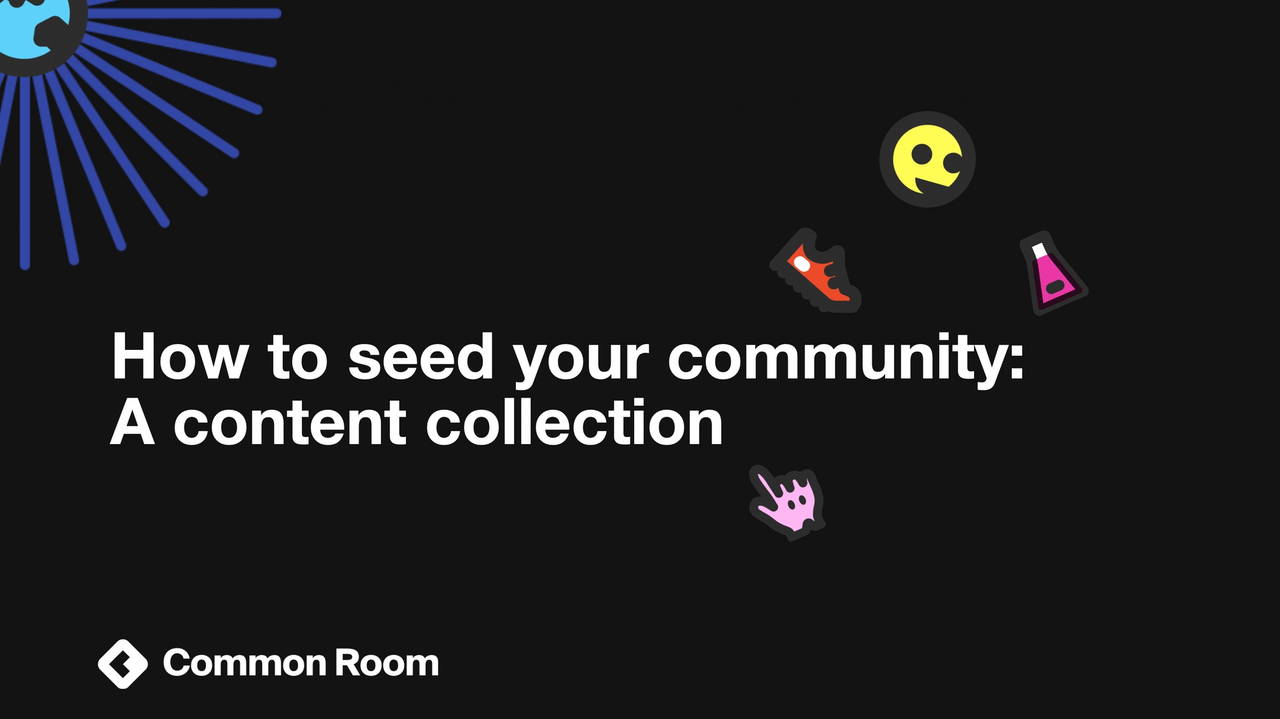You and your organization are thinking about starting a community. You’re looking forward to empowering your business, building products users love, and tapping into your user-led flywheel, and you’re eager to scale the impact of your community to get it all started. You also know it’s not something to take lightly - it takes time, effort, resources, and thoughtfulness to launch a community and seed it with members who will become your founding community voices.
How to seed your community
So how do you seed your community? We’ve put together a collection of pieces to help you get started:
- Community success metrics: Know what you're building for
- Building your community technology stack to ensure enduring community investment
- How to choose your first community channel
- How to launch your first community channel
- Choosing Slack: Our top priorities for opening Uncommon's first owned community channel
- How to set community standards
- Code of conduct: Expectations for community participation
- The Uncommon Book Club: A conversation with community expert Carrie Melissa Jones
- Intro to Common Room and best practices with Webflow
At Common Room, we know that communities often start as small groups who want to connect over shared interests and goals, and sometimes they begin from zero. Over time and with attention and intentionality, they grow along a community maturity curve - from a newly seeded community where you’re facilitating a lot of conversations, to and through a growth stage where members proactively connect with one another on their own, to a mature stage where the community informs and powers a user-led flywheel.
On March 31 of last year we launched the Uncommon community, which began humbly as an invitation to subscribe to our monthly newsletter. We simply wanted to know who was interested in learning more about community building and who was interested in learning that from and with us. In July, we opened our Uncommon community Slack channel, which has since grown to 1,000 members who use it to share expertise, connect with us and each other, and to get near real-time product help using Common Room. We’re continuing to cultivate the seeds we planted last year and are excited to see how the community is growing, supporting one another, and sharing valuable product feedback that helps us improve Common Room every day.
The content collection
As you prepare to seed and grow your own community, these pieces should help you think through who and what you’re building for, what you’ll need in your modern community technology stack, how to choose and launch your first community channel, how to welcome members into your community, and more.
- Community success metrics - Know what you're building for: We originally wrote this post for 2022 planning, but knowing what you’re building for is always in style. Aligning early with your stakeholders about how you’ll measure the success of your community will help you continue to earn the investments that enable you to scale its positive impact across your members and on the business. This piece covers four essential success metrics: Membership, engagement, business impact, and responsiveness. Today, our customers use Common Room to track these metrics and easily share reports with their stakeholders.
- Building your modern community technology stack: There’s no shortage of tools for a community manager to choose from, and the list continues to grow every day. This article covers the community engagement tools and the business data tools you’ll want to evaluate when building your modern community tech stack.
- How to choose and launch your first community channel: Now that you have an idea of how you’ll build out your community tech stack, you’ve got to open your first community channel. Each channel has its benefits, and each community might be better suited to certain channels. To help you navigate the decision, we offer this framework for evaluating channels and this checklist for launching your channel. For the Uncommon community, we chose Slack as our first community channel. Here’s why.
- Preparing to welcome members into your community: Hooray! Your community is about to connect in a new way. To help everyone who joins your community start off on the same page and understand the expectations of participation, you’ll want to set community standards and publish your community code of conduct publicly. And when new members join, you’ll want to welcome them—Common Room’s automations feature enables you to send a welcome message to every new member to make sure everyone receives a warm hello.
- Building Brand Communities - A conversation with Carrie Melissa Jones: Community consultants like Carrie Melissa Jones brim with expertise. In this Uncommon Book Club event based on her book, Building Brand Communities, Carrie covers the important work of establishing a community's 'why,' useful ways to assess next steps for the particular stage of a community, and how to encourage meaningful engagement in both digital and physical settings.
- Using Common Room to supercharge your community work - A webinar: In this webinar, Matthew Munger at Webflow shows you how they use Common Room to stay on top of what’s happening in their community, build and nurture relationships with their community members, and measure their community’s health.
Every community is different, so opening dialogues with the people you want to bring together is always the best way to begin. When you connect with them, we hope you’ll use what you learn from the content above to share your intentions and ideas about how you’ll seed and grow the community, and then co-create your community roadmap together.
To better engage, support, and grow your community, get started with Common Room for free.
